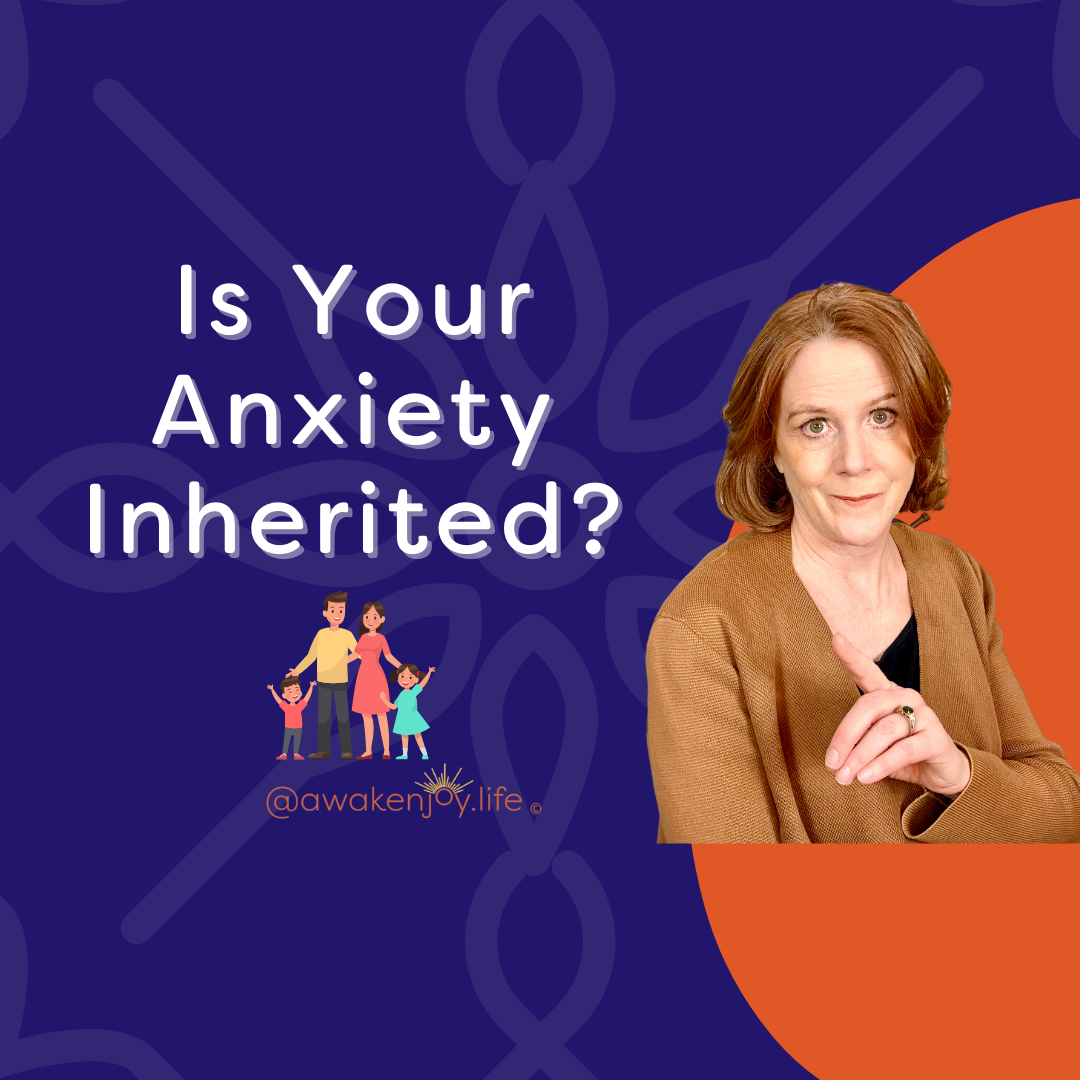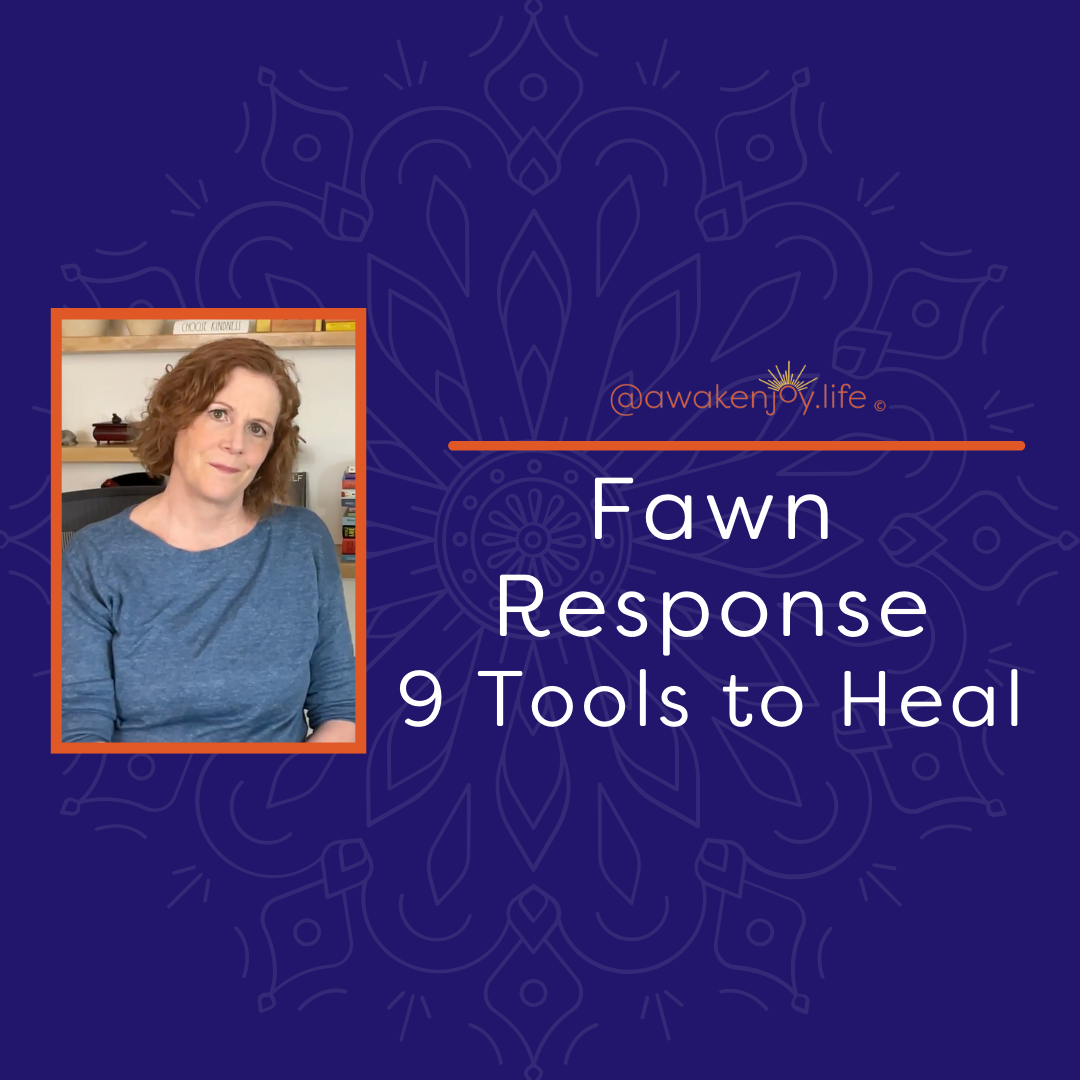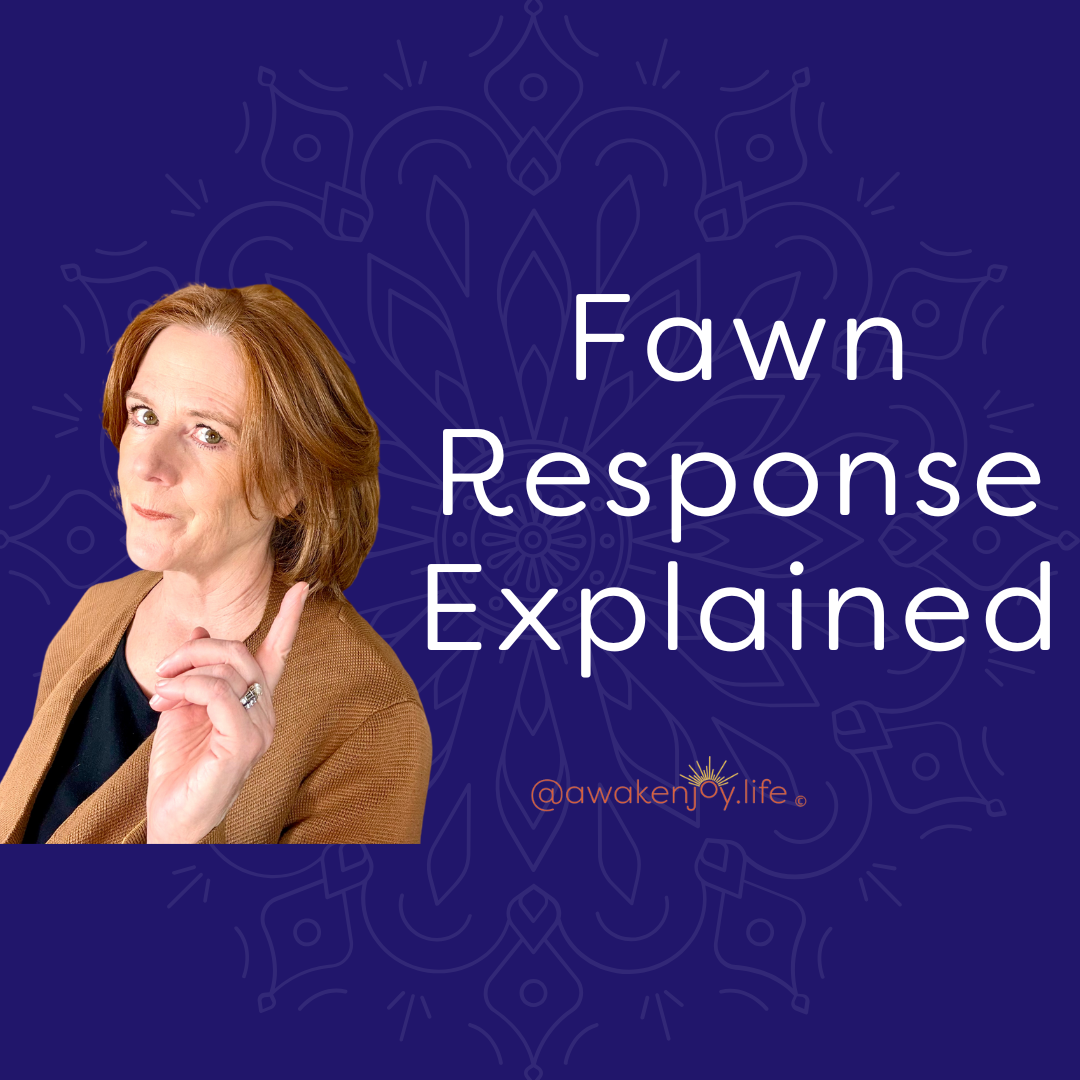Were You the 'Responsible One'? How Parentification Create Adult Anxiety
Barbara Heffernan • June 24, 2025

Do you find yourself constantly worried about other people's problems? Do you feel responsible for everyone else's emotions and well-being? If you're nodding along, you might be experiencing the lasting effects of growing up parentified—and you're certainly not alone.
How Parentification Creates Adult Anxiety (And How to Heal)
If you grew up parentified, you most likely experience a fairly high degree of anxiety as an adult.
This connection exists because parentified children are trained from a very young age to take care of other people's emotional needs—an impossible task—and often to handle household responsibilities that are far beyond their developmental capacity.
Being responsible for things that are beyond your ability creates a perfect storm for anxiety, both in childhood and adulthood. At its core, anxiety involves trying to control the uncontrollable. When we attempt to manage things we're powerless over—especially other people's emotions—we set ourselves up for chronic anxiety. This is a complex topic, and I'll explore it more deeply as we go.
Core Characteristics of Parentified Adults
Most people who grew up parentified share certain characteristics. While these traits can have positive aspects, they also create a foundation for persistent anxiety. Let's examine these patterns:
**Chronically Overcommitted**
Growing up, you had too much on your plate, and these patterns persist into adulthood until we actively work to heal them. As adults, we continue to take on more than we can reasonably handle. Being chronically overcommitted leads to overwhelm, constant stress, and persistent anxious feelings.
**Difficulty Relying on Others**
People who grew up parentified struggle to depend on others. As children, they learned they couldn't trust others to handle important responsibilities—they could only rely on themselves. This becomes an ingrained pattern that follows you into adulthood.
While developing strong self-reliance can be positive in many ways, extreme self-reliance creates unbalanced relationships. The healthiest relationships involve interdependence—sometimes we depend on others, and sometimes they depend on us. There's a natural give-and-take.
When we resist relying on anyone else, we prevent this healthy interdependence from developing. This leaves us without adequate support, which increases anxiety. Everything feels like it rests on our shoulders, and we end up believing that other people's behaviors and problems are our responsibility to manage.
Reframing Your Childhood Experience
In my 20 years of working with clients as a therapist, I often heard, "But I was
the most capable person in my family. I was
the only one I could rely on."
You probably were the only reliable person in that family system. Learning to depend on others as an adult will be challenging, but it's absolutely worth the effort.
However, believing you were the most capable and intelligent family member likely reflects seeing yourself through your parent's eyes. Your parent viewed you as the most capable, you internalized that perspective, but you're not seeing the experience through a child's lens.
From a child's perspective, while you may have gained some self-esteem from taking care of others, you were also carrying an enormous burden far beyond your years. This responsibility limited your ability to play, prevented you from being carefree (even momentarily), and kept you constantly focused on what you needed to accomplish for others.
All of these factors contribute significantly to anxiety.
## **[How to Heal Your Anxiety from Parentification]{.underline}**
While standard anxiety reduction techniques can certainly help, I believe you'll find it very difficult to fully recover from this type of anxiety unless you address the root cause of parentification and understand how it has shaped you.
### **1. Identify Your Negative Core Beliefs**
The first step toward healing involves understanding what negative core beliefs you developed as a result of parentification.
The most common belief is: **"My needs don't matter as much as everyone else's needs."**
If you were emotionally parentified, you learned very early that your parent's emotions (or perhaps both parents', or the entire family's emotional state) took priority over whatever you were feeling.
Other common core beliefs include:
- "I can't trust others"
- "I can't rely on anyone but myself"
While these beliefs are interconnected, you must genuinely believe that your needs matter before you can make meaningful changes to your parentification patterns or reduce your anxiety.
I've created a free PDF that helps you identify your specific negative core beliefs and provides practical methods for transforming them. You can find the link in the description. You'll need this deep conviction that your needs matter to successfully implement the following steps and change your patterns of worrying about things beyond your control.
### **2. Accept Your Powerlessness Over Others**
I understand that the concept of powerlessness frightens many people. Your immediate reaction might be, "No, I don't want to admit that." However, we must be willing to accept reality.
We are completely powerless over the weather (at least immediate weather conditions). We are equally powerless over other people's emotions.
While we can influence others' emotions and certainly offer help, we cannot control how others feel or respond.
Consider this example: If a child grows up feeling responsible for preventing their mother's depression, they might occasionally succeed in cheering her up or motivating her to take care of responsibilities. These small victories feel incredibly reinforcing. However, the child cannot cure their mother's clinical depression.
The same principle applies to a parent with addiction. A child might sometimes prevent dad from losing his temper or temporarily stop a family member from using substances, but ultimately, controlling someone else's addiction is impossible.
When we truly accept that something is impossible, this acceptance becomes profoundly liberating. You might think, "I really can't control this outcome, so there's no logical reason to exhaust myself trying."
### **Creating Emotional Boundaries**
For people who still feel responsible for managing others' emotions, I recommend visualizing your emotions as existing within a bubble around you, while the other person's emotions exist within their own separate bubble.
I've developed a guided meditation on this concept, and I explore it extensively in my boundary program. This work helps you develop a solid sense of your emotional boundaries—understanding where they begin and end, and clarifying what you are and aren't responsible for managing.
### **3. Release Attachment to Outcomes You Cannot Control**
The third step involves letting go of excessive attachment to results that lie outside your control.
Typically, people become most attached to outcomes involving family members with self-destructive behaviors. I completely understand your desire to help and make a positive difference. However, if you believe you're responsible for someone else's choices and behaviors, you'll remain trapped in anxiety because you'll continuously attempt to control something that someone else actually controls.
Other adults have complete agency over their own behavior, whether that leads to positive or negative consequences.
## **[Real-World Examples]{.underline}**
Let me illustrate how these three principles work together with concrete examples:
### **Example 1: Your Young Adult Child's Career Choices**
Imagine you're a parent whose young adult child is pursuing what you consider a disastrous career path. You believe they won't be able to support themselves financially, and you desperately want them to choose a different professional direction. You spend enormous mental energy strategizing how to convince them to change course.
This constant worry is probably damaging your relationship because your young adult wants autonomy over their decisions, while you're consumed with fear about their future.
Your motivation stems from genuine care, but it's manifesting as anxiety and attempts to control something beyond your influence.
### **Example 2: A Friend in What You Perceive as an Abusive Relationship**
Another common scenario involves a friend who remains in what you believe is an abusive relationship, and you're determined to help them recognize this.
Speaking up and sharing your observations is appropriate and caring. However, if you become convinced that it's your responsibility to ensure they leave this relationship, you'll experience tremendous anxiety trying to control someone else's major life decisions while potentially damaging your friendship.
These situations are genuinely difficult. When we witness someone making choices that appear destructive, stepping back feels almost impossible.
## **[The Healing Paradox: Embracing Temporary Discomfort]{.underline}**
Here's a crucial aspect of healing that many people don't anticipate: as you begin changing your behaviors and establishing healthier boundaries, your anxiety will temporarily increase.
Currently, your anxiety drives you to worry about others and intervene (or desperately want to intervene) or obsessively analyze their situations. Your anxiety is the engine behind these behaviors.
However, restraining yourself from these familiar responses will initially heighten your anxiety. Learning to tolerate this temporary spike in anxious feelings is essential for changing your behavioral patterns, which is what ultimately transforms this entire cycle.
## **[Your Roadmap to Freedom]{.underline}**
Here are the essential steps for healing anxiety rooted in parentification:
1. **Understand how parentification affected you** and identify the negative core beliefs that developed as a result, then begin the work of healing those beliefs
2. **Accept your powerlessness over others** and develop clear emotional boundaries
3. **Release attachment to outcomes** involving other people's behaviors and choices
4. **Prepare for and tolerate the temporary anxiety increase** that occurs when you stop trying to control others—and learn to sit with this discomfort
Remember, if you grew up parentified, these patterns developed as survival mechanisms. They served an important purpose in your childhood environment, but they no longer serve your well-being as an adult. With understanding, patience, and the right tools, you can heal from this anxiety and build healthier, more balanced relationships.
Healing from parentification requires time and often benefits significantly from professional support. Please be patient and compassionate with yourself as you learn to prioritize your own needs and trust others to manage their own lives.
I'd love to hear whether this information resonates with your experience and what insights emerge for you. If you found this helpful, please share it with others who might benefit from understanding this important connection between childhood parentification and adult anxiety.
Blog Author: Barbara Heffernan, LCSW, MBA. Barbara is a licensed psychotherapist and specialist in anxiety, trauma, and healthy boundaries. She had a private practice in Connecticut for twenty years before starting her popular YouTube channel designed to help people around the world live a more joyful life. Barbara has a BA from Yale University, an MBA from Columbia University and an MSW from SCSU. More info on Barbara can be found on her bio page.
Share this with someone who can benefit from this blog!
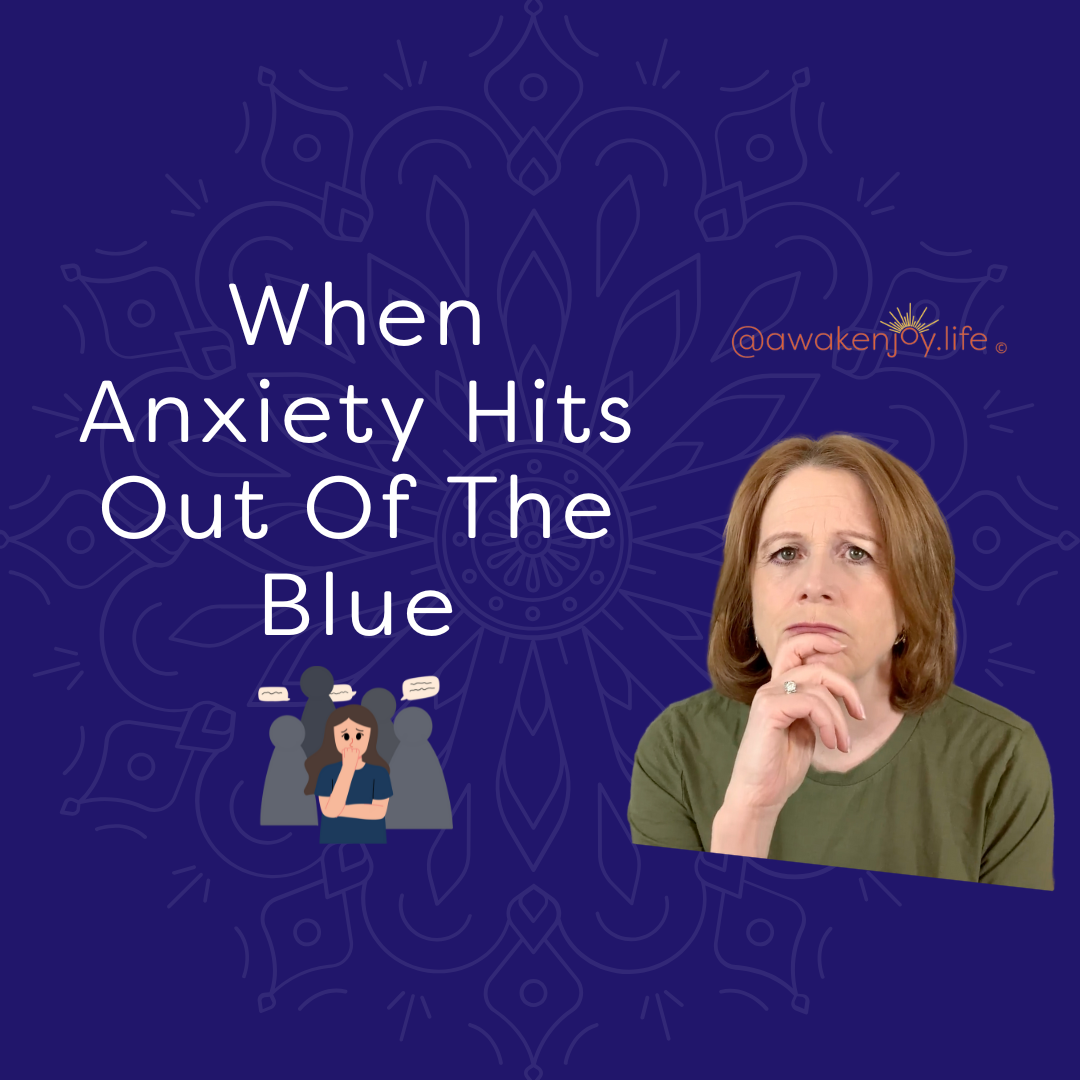
You might be walking along, not thinking about anything that would make you anxious, when all of a sudden you're filled with anxious feelings. There's a reason this happens, and I'm going to share it with you today. Understanding subconscious triggers can help you understand yourself and calm your anxiety. The Frustrating Reality of Somatic Anxiety We're often told that anxiety starts with thinking, with our cognitions. People or doctors will say, "You must have been thinking about something that made you anxious. There must be something happening in your life that makes you anxious." This can be incredibly frustrating and invalidating for people who experience somatic anxiety—anxiety that manifests in the body. Very often, people who experience anxiety this way become frustrated because the anxiety management tools shared by therapists, doctors, YouTubers, and friends don't relate to their experience. In this blog, I'll help you make the connection between how you experience anxiety and how these tools actually can help you, when applied correctly. Understanding Subconscious Memories Very intense experiences become linked in our memory bank with the physiological feelings we experienced at the time. This can happen with positive memories and with very negative and upsetting memories. Our hippocampus, one of the key parts of our brain that handles memory, encodes our memories with sights, sounds, feelings, smells and tastes—but not always with a complete "story" of the event. Positive Memory Links On the positive side, there might be a particular smell—like cinnamon or something your grandmother cooked—that brings you a lot of pleasure. Or it could be the way the landscape feels and smells during the first snow. You might have many positive memories, and when those sensory elements recur, you feel that positive response. Sometimes this links to an something you do remember, but not always. Traumatic Memory Links With traumatic memories, these links can be formed in a very intense way. For both major traumas and smaller traumas, we can have encoded memories that don't reach our conscious mind, but these memories are encoded with the physiological feelings of the experience. When these physiological responses are triggered, they can feel completely out of your control, making you feel powerless to stop or change the feelings. The intensity of the link between sensory information and emotional response is related to the intensity of the initial trigger event. The link is also strengthened each time you experience the trigger. Preverbal memories can also be encoded this way and trigger these feelings. However, the practices needed to calm these responses is the same whether the initial experience is conscious, subconscious or preverbal.
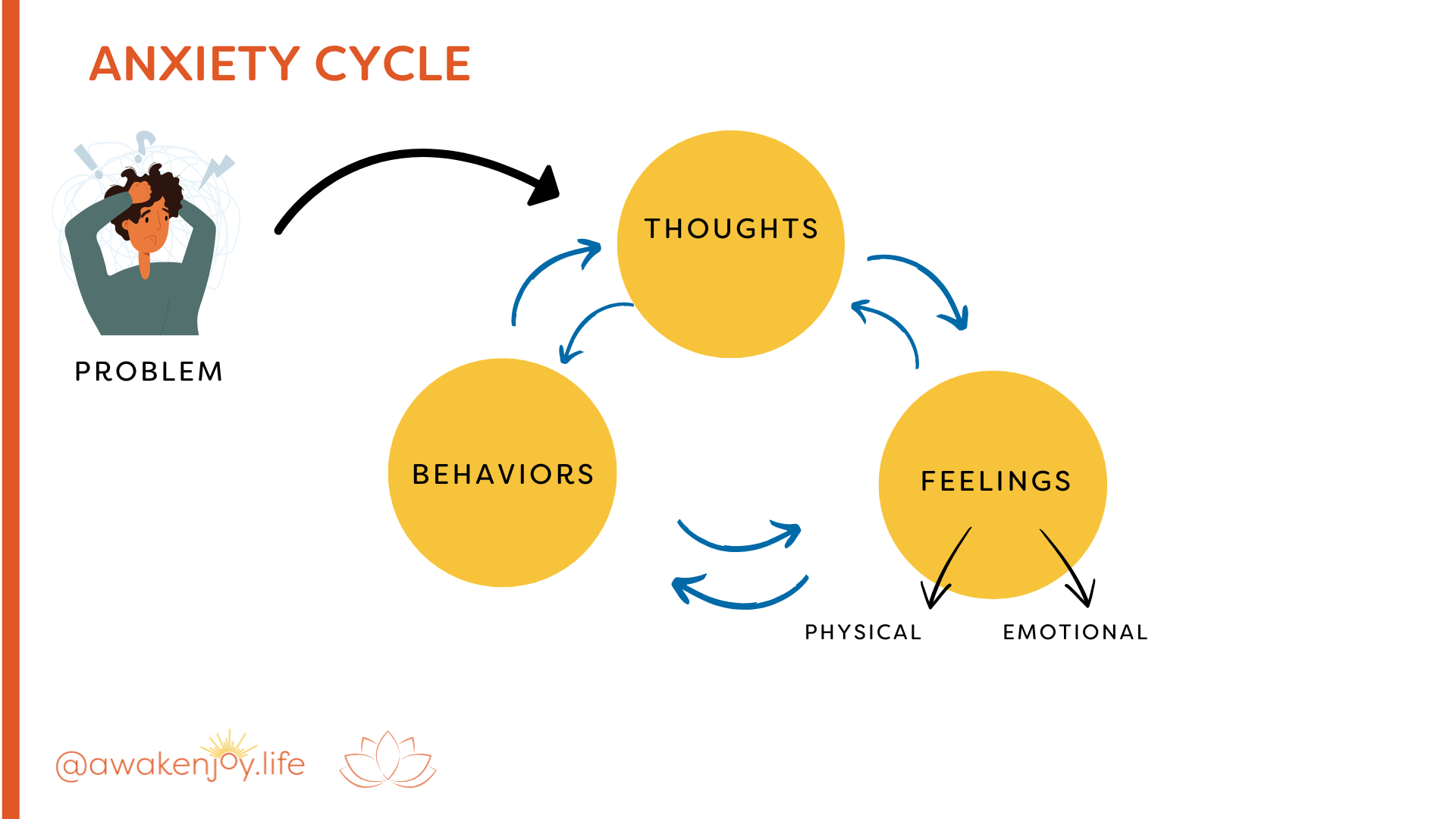
Physical Symptoms of Anxiety: Understanding Your Body's Response If you're experiencing physical symptoms from anxiety, these can be very strong and very scary. You're probably wondering: could these really be anxiety? Maybe you weren't particularly worried and you're still having these very strong physical reactions. Or perhaps you weren't worrying at all and the physical reactions just hit you out of the blue. This can be very confusing, and many people wonder: is this anxiety or is it something else? In this article, I'm going to cover physical symptoms of anxiety in detail, explain why your body responds this way (understanding this can really help you calm yourself about the symptoms you're having), and discuss what you can do about it. First Things First: See a Doctor If you're having serious symptoms, you always want to see a doctor and get everything checked out. There are a number of conditions that can look similar to anxiety symptoms. However, if you've been given a clean bill of health, this blog will help you understand why these symptoms arise from anxiety and confirm that they are from anxiety! Now, I want to reiterate: **anxiety is not all in your head.** Even if a doctor says there's "nothing wrong with you and these symptoms are anxiety," know that anxiety does cause real physical symptoms . They are uncomfortable, they can be very scary, and they are real. You are really physically feeling something. How Anxiety Affects Your Entire Body Anxiety can impact almost every one of our major physiological systems. Anxiety can impact our: - Cardiovascular system - Respiratory system - Gastrointestinal system - Muscular skeletal system - Other parts of our nervous system Cardiovascular Symptoms include: - Increased heart rate - Pounding heart or racing heart - Palpitations (sometimes fluttering or a skipped beat) - Chest pain - Lightheadedness or dizziness - Feeling faint or unsteady As I mentioned earlier, if you're having these symptoms, have them checked out by a doctor. However, if they're tied to anxiety, you can then begin to treat them as anxiety. Gastrointestinal Symptoms include: - Difficulty swallowing - Change in appetite (some people when they get very anxious can't eat at all, while other people just want to do nothing but eat - it really can impact you either way) - Upset stomach - Nausea - Diarrhea - Other digestive problems - Constipation Respiratory Symptoms include: - Shortness of breath - Hyperventilation Muscular Skeletal Symptoms include: - Muscle tension (very common) - Tremors or shaking - Tics (for example, a little pulse in your eye, which is pretty common, or in your hand - it can happen in different places) - Headaches (very common with anxiety) - Muscle aches, pains, and cramps Other Symptoms include: - Numbness or tingling in your extremities - Sweating - Dry mouth - Fatigue - Insomnia You can really see how the physical symptoms of anxiety can impact your whole body. Understanding the Adrenaline and Cortisol Cycle Let me explain briefly about the adrenaline and cortisol cycle, because all of these symptoms actually have a common cause when they're caused by anxiety. When you have a stressor, your adrenaline begins to spike. This isn't necessarily a bad thing - if you have a saber tooth tiger you need to run away from, you want your adrenaline to kick in. Sometimes a small amount of adrenaline can be motivating to study for an exam, prepare for a big work meeting, or motivate yourself to get off the couch and do what you need to do. A certain amount of adrenaline helps us get up in the morning, so a little bit can be helpful. Too much can be problematic. When adrenaline kicks in, shortly thereafter a hormone called cortisol kicks in and begins to rise. As cortisol peaks, the adrenaline starts to drop. So the cycle goes: stressor → adrenaline goes up → cortisol goes up → then they both drop, hopefully followed by a period with no stressors. When another stressor hits, it happens again. Our bodies are built to deal with this. If your stressors are happening and your adrenaline is spiking once in a while, often you won't have major physical symptoms. However, if you have continual stressors, how you manage your stressors will impact this cycle as well. And this is not to minimize stressors. Some are very serious, some can be minor. The more you can make sure you aren't overreacting to the minor stressors, the more energy and wherewithall you will have to deal with the serious ones. And many serious ones require planning, which is more effective when you are not in the middle of an adrenaline-cortisol spike. If we respond to minor stressors with a lot of anxiety and worry (which is really what an anxiety disorder is), we're continually responding to every stressor, whether it's big or not, with adrenaline. Then cortisol kicks in. With continual stressors and the way we respond, the cortisol never gets a chance to come down. Cortisol can remain elevated chronically on an ongoing basis, and that has actually been implicated in a number of major diseases. I'm not saying this to frighten you, but to give you motivation that you can have agency over your anxiety. Anxiety is very treatable . When I worked with people as a therapist for over 20 years, working with anxiety was very satisfying for me as a therapist, and it was satisfying for the client because people could make major progress. So I want to give you that hope. The Health Impact of Chronic Stress: Continually elevated cortisol levels are tied to: - Diabetes - Osteoporosis - Cardiovascular disease - Weakened immune system - High blood pressure - Impact on sexual desire and libido - Reproductive functions Why This Happens: Your Body's Design Your body is designed to deal with dangerous situations. Our brains evolved this way. We have an amygdala and a fight, flight, and freeze response. If we're actually being chased by a dinosaur or a scary dog, we're designed so that our fear response will kick in: - Our adrenaline will spike - Our muscles will tense - Our heart rate goes up - We have digestive issues (you don't need to be digesting your food if you're being chased by a wild animal - you need to not digest that food and just run) - We get a very single-minded focus I want to come back to that single-minded focus because I think it's quite important and we don't always talk about that being an impact of this fear response. We need this fear response - we want it in some situations. The problem is when we think about that dinosaur, when we think about that scary thing happening, our body has the same response. Simply thinking about being attacked by whatever the danger is produces the same response: our adrenaline spikes, our muscles tense, our heart rate goes up, we have digestive issues, we get a single-minded focus. That single-minded focus is problematic because most of the problems we face today really need our whole brain online. We need to be able to think creatively, pull in solutions, and be aware of what we can do right now and what we want to do to be prepared to face problems in the future. You want the whole brain working, not just that overactive amygdala, and you want to be thinking creatively. That's not what happens when you have to run away from a wild animal. How All Physical Symptoms Connect All the physical symptoms of anxiety have a common thread - they can all be tied to a fight, flight, or freeze response: - Your inability to swallow or eat: if you have to fight, flee, or freeze, you're not eating a meal - Digestive issues: if you have to fight, flee, or freeze, you're not digesting your food - in fact, the opposite - Constipation can be tied to the fight or flight response - Diarrhea is more tied to the freeze response The freeze response kicks in when we can't fight and we can't flee. You'll see this with animals - if an animal is being attacked by a larger animal and can't run away, it will go into a freeze state. A number of symptoms that you might not think were anxiety-related are actually freeze state related, such as dizziness, lightheadedness, and passing out. The opposite - heart rate going way up and heart palpitations - is part of the fight or flight response. What You Can Do About This **Identify Your Symptoms as Anxiety** If you've had everything checked out and you are having these symptoms, or if you know that these are tied to anxiety, you can begin to treat them that way. As you begin to try to relax your physiological being, you will probably see an improvement in your symptoms. Treating the symptoms as anxiety allows you to take care of them, and then they won't be making you more anxious. You won't be worrying about the symptoms, which is what tends to happen and why they tend to worsen your anxiety cycle. **Practice Healthy Relaxation Techniques** Practice techniques that help you relax in a healthy way. This does not include things like alcohol or benzodiazepines - those have a biphasic impact. They might give you a feeling of relaxation, but when their half-life is through and they're processing through your body, they leave you more anxious than you were before. They have two phases and aren't going to help you get over anxiety in the long run. Instead, focus on techniques like: - Yoga - Diaphragmatic breathing - Progressive muscle relaxation - Grounding techniques - Mindfulness practices All of these can help you be here now and pull your mind back away from all the projected problems. Even if your anxiety is hitting you physically, it's going into a cycle where you begin to worry about the physical symptoms. Understanding Your Anxiety Cycle Whether your anxiety starts with thoughts or physical feelings, it creates a cycle. If you start with physical feelings, you might say, "Well, I didn't have a story. There wasn't something I was worried about. I just got hit with these physiological feelings." But then because you were hit by them, you started to worry. That's where your cycle starts. Whether it starts with thoughts or physical feelings doesn't matter in terms of how you approach healing - if it starts with physical feelings, you need to help it not lead into worry about those physical symptoms. I think that's one reason to understand that these symptoms could actually be anxiety. If they are, you don't have to worry about them - you have to calm yourself. The anxiety cycle can start in two fairly typical ways: 1. **External Problem Starting Point**: There's some kind of external problem and our minds jump into trying to figure that problem out. We jump into the future and might catastrophize. 2. **Sensory Event Starting Point**: There's some kind of sensory event (sometimes below your awareness - it could be a smell or something you weren't even aware of) that causes a physiological reaction. That anxiety makes you think, "I'm feeling anxious, there must be something I should worry about." Then you jump into the cycle of wondering what you have to worry about, or your mind goes through all your problems. Wherever it starts, it goes into this entire cycle: anxious feelings lead to anxious thoughts or increase the ones you're having already. They also lead to anxious behaviors (which can be either compulsive or avoidant). Both anxious thoughts and anxious behaviors then increase those physiological and emotional feelings of anxiety. It's really key to understand your cycle - your anxiety cycle - where it starts, where it goes, how it works, and how you can learn to interrupt it. Looking Ahead This video is part of a three-part series. Next week, I'll be releasing a video about anxiety when there is no story - for people who feel anxious but can't identify what they're worried about. We'll talk about how our past experiences get linked deep in the brain, creating connections between certain sensory information and emotional responses. This link can be either positive or negative and can often be the trigger for anxious physical symptoms, sometimes out of your conscious awareness. **Remember: anxiety is very treatable.** You can definitely make improvement and lower your anxiety. If you're getting value from this information, please share it with others who might benefit. Let me know what you thought of this article and whether it was helpful. Understanding that your physical symptoms might be anxiety-related is the first step toward managing them effectively and breaking the cycle that keeps you stuck.
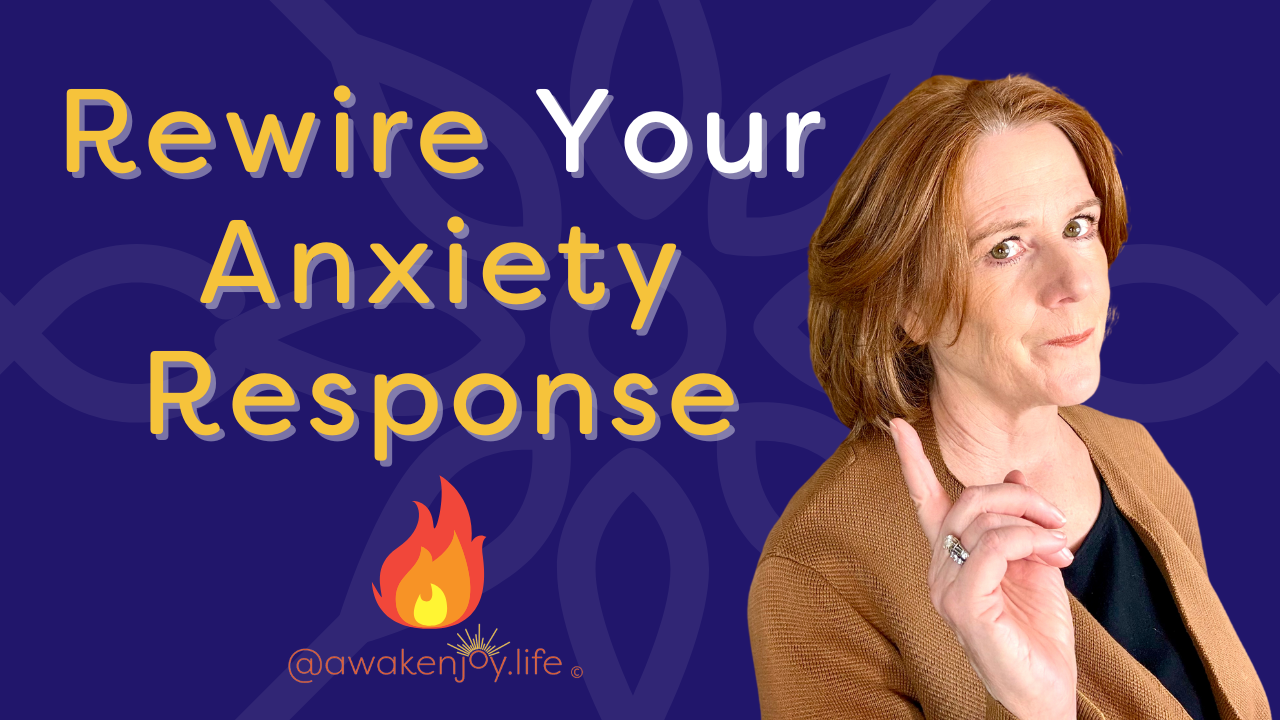
In this blog, I'll discuss why and how this happens. I'll also go into some super interesting scientific research on movies that is demonstrating how strongly our brains and bodies respond to "made-up" stories. And most importantly, I'll provide guidance about how to use this information to calm your own anxiety. Whether your anxiety starts with worrying thoughts or a physical feeling, this will help! approach to understanding anxiety will be tremendously helpful for your recovery. The Cognitive Behavioral Therapy Cycle If you've watched my videos or read other blogs, you're hopefully familiar with the cognitive behavioral therapy cycle. The basic principle is that your thoughts impact your feelings and behaviors, your feelings impact your thoughts and behaviors, and your behaviors impact your thoughts and feelings. All these elements cycle together in an interconnected loop. While we generally think about anxiety as starting with a problem—an external problem confronts us and we respond with thoughts that feed the anxious cycle—this isn't always the case. For some people, sensory information actually triggers the initial response. It could be a smell, sight, or sound that directly triggers anxiety without any conscious thought process. Understanding where your personal cycle typically begins matters for healing, which I'll address at the end of this article. However, regardless of where your cycle starts, it will cycle through all components: thoughts, feelings, and behaviors reinforcing each other. Two Pathways: External Problems and Sensory Triggers **When External Problems Trigger Anxiety** Let me start with anxiety that begins with external problems. The problems that most commonly impact our anxiety share certain characteristics: they involve significant uncertainty, focus on outcomes we desperately want but can't completely control, and require us to project into an uncertain future. We might focus intensely on getting the job, achieving happiness, or attaining whatever we define as success. Because there are elements outside our control and enormous uncertainty involved, we begin projecting into the future, imagining potential obstacles and complications. This forms the basis of cognitive anxiety—anxiety that originates with our thoughts. This process leads to catastrophic thinking—imagining we'll encounter one problem after another and wanting to prevent all these potential problems. Since none of these imagined problems are occurring right now, we can't actually prevent any of them in the present moment, yet we feel compelled to anticipate every possibility. This mental process fuels increasing anxiety. As we fuel anxiety through catastrophic thinking, we generate intense physical symptoms. These are fight, flight, and freeze responses driven by the amygdala and other primitive brain regions. These physical symptoms then convince the rest of our system that we truly do need to be anxious, creating a self-reinforcing cycle where physical symptoms validate our anxious thinking, which increases both anxious thoughts and anxious behaviors. The entire cycle—thoughts, feelings, and behaviors—spirals out of control. **When Sensory Information Triggers Anxiety** The other pathway occurs when anxiety starts with physical sensations triggered by sensory information, often without conscious awareness. Many people experience sudden panic attacks and report, "I wasn't anxious, I wasn't thinking about anything worrying, and suddenly I started having this panic." However, once those physical symptoms appear, they typically trigger the cognitive component of the cycle. The moment you notice these physical sensations, cognitive worry often begins: "Oh no, why am I having this symptom? Something must be wrong with me. Maybe this really isn't anxiety. Maybe there's something else wrong with me." If we could experience those physical symptoms and simply acknowledge, "Oh, that's happening again," without creating a worry narrative around them, we wouldn't be feeding the anxious cycle. I'll discuss at the end of this article why anxiety triggered by sensory information happens, often completely beneath conscious awareness. I want to mention that whether your anxiety starts with external problems leading to catastrophic thinking, or it starts with physical feelings triggered by sensory information, the cycle operates similarly. Many people experience sudden panic attacks and say, "I wasn't anxious, I wasn't thinking about anything worrying, and suddenly I started having this panic." However, once you have those physical symptoms and pay attention to this pattern, you'll begin to see the cycle. Once you experience those physical symptoms, you enter cognitive worry: "Oh no, why am I having this symptom? Something must be wrong with me. Maybe this really isn't anxiety. Maybe there's something else wrong with me." If we could experience some of those physical symptoms and simply think, "Oh, that's happening again," without worrying about it, we wouldn't be feeding this cycle. I hope this makes sense. I'll discuss at the end why anxiety triggered by sensory information happens, often without your conscious awareness. The Evolutionary Basis of Our Physical Response Humans evolved, and our brains evolved, with a primary focus on survival. Our brain developed to keep us safe and alive. The amygdala, which plays a key role in this process, primes us to fight, flee, or freeze whenever there's a threat. Here's the crucial point: **the amygdala cannot differentiate between real and imagined threats**. This is where we need our frontal lobe to intervene, calm the amygdala, and recognize, "This isn't actually a dinosaur chasing me." I have several videos about amygdala hijacks and being triggered, which will be useful if you're interested in this topic. The key point is that made-up stories trigger the same physical response as if the situation were actually happening. The Movie Research Connection Let's consider movies. We know they're not real, yet we still respond physiologically. I'm someone who jumps constantly during movies when something scary or shocking happens—I have a very external expression of it. Not everyone does, but many people do, and we all feel something. Current research on movies and their effects on our brain and body is fascinating. The research demonstrates measurable physical responses to movie events. We know movies aren't passive experiences, but the fact that they trigger measurable changes is remarkable. Researchers can measure hormonal changes and electrodermal activity (the amount of sweat on your skin). These are subtle changes that vary with different emotions. Electrodermal activity is one tool researchers use to observe physiological changes in humans tied to emotions while watching movies. Heart rate and blood pressure are measured during movies. There are now numerous studies using fMRIs to examine brain imaging and brain activity while people watch movies. When we watch scary movies, our innate fight, flight, and freeze response activates, preparing us for immediate danger even though the danger isn't real and isn't physically present. Simply being frightened by the story triggers measurable spikes in adrenaline and cortisol levels—our stress chemicals. This provides a powerful example of how our bodies respond to imaginary threats, responding the same way to those anxious made-up stories in our minds. Positive Research Findings There's also positive research about movies. Watching comedies and laughing actually lowers blood pressure—we should all watch more comedies! Heart rates can reach 40 to 80% of their maximum rate (the range doctors recommend for exercise) and can remain elevated for extended periods during movies, which could actually be beneficial. Another key finding is that heart rates and electrodermal activity—all physiological data—fluctuate with the narrative arc. As the story changes, so does people's physiology. Some research shows that audience members' heartbeats begin to beat in synchrony with each other, which is fascinating. This makes me think about how when we're next to someone who's anxious, we probably feel more anxious ourselves. We pick up on each other's moods, emotions, and sometimes physiological states. Brain Imaging Research fMRI studies show that stressful movies can trigger the same neural circuits involved in anxiety—the same brain circuitry that fires together during anxious feelings. Movie watching actually recreates emotional states accurately—the same emotional states we experience in real life. There are increasing fMRI studies examining brain function during movies, mapping brain areas that activate with different emotional states. Researchers are using this in studies of affective and emotional disorders, including anxiety. This research definitely connects to those made-up stories in our minds. How to Calm Your Anxiety What do you do about this? How do you calm your anxiety? I have numerous videos on this topic—I'll provide highlights here and point to areas you might want to investigate further. **1. Increase Awareness of the Thought-Feeling Connection** To calm your anxiety, first increase your awareness of the connection between your thoughts and feelings. Use this growing awareness to separate the physical feeling from the "made-up story." I use "made-up story" in quotes because I know there are real problems, but they're being projected into the future where what you're worrying about isn't happening right now. Separate that physical response as much as possible from those thoughts. The intense physical response triggered by catastrophizing isn't congruent with the present moment—sitting here in this environment right now. It's also unnecessary for solving the problem. In fact, it can interfere with actually solving the problem. **2. Understand Your Personal Anxiety Cycle** Really understand your anxiety cycle. Does your cycle start with external problems? Does it start with internal feelings? Does it start with sensory experiences? If external, what types of events trigger it? What are you anticipating? How does this impact your thoughts, feelings, and behaviors? How does this cycle work for you? Behaviors can either contribute to anxiety or help you calm down. Become intimately aware of your personal anxiety cycle. **3. Prioritize Calming Your Physical System** Calming your physiological state is one of the most powerful interventions available. It truly communicates to older brain parts—the amygdala and ancient areas that don't have language centers—that you're actually safe. Essential tools include diaphragmatic breathing and grounding techniques. I recommend practicing these regularly on a daily basis, preferably when you're not highly anxious. Begin doing them regularly every day, and you'll develop the ability to access them during more anxious states. This builds over time like a habit, like a muscle that grows stronger. **4. Identify Helpful and Harmful Behaviors** Identify behaviors that contribute to your anxious cycle and those that break it. Consider how your behaviors—whether compulsive or avoidant—contribute to your anxiety. If you're afraid of something and avoid it, you're communicating to your primitive brain, "This is really scary; I better run away." Identify what those behaviors are and what behaviors you can implement to cut the cycle, calm yourself, and change the pathways. Behavior is actually the most powerful way to change your brain circuitry and create new neural pathways. Habitual physical reactions get different brain regions working together rapidly. Your brain develops neural pathways where this event leads to this feeling, leads to this thought, and it accelerates with repetition. Habits of anxiety and habits of relaxation are equally important. **A Practice Exercise** One thing you can practice—this is just one idea among many—is actually calming your body while thinking about the situation that frightens, triggers, or worries you. Think about that situation while doing diaphragmatic breathing or grounding techniques and observe what happens. If you haven't seen my free webinar, " Rewire Your Brain for Joy and Confidence ," it explores the concept of neural pathways and what you can do to change them to feel less anxious and focus more on joy. It covers what behaviors you need to change, and I think you'll find it helpful. Conclusion and Future Content Pay attention to what behaviors you can implement to help break the cycle. These can include diaphragmatic breathing and grounding techniques, as well as taking walks, petting animals, and similar activities. I know some viewers would like more information about the actual physical symptoms of anxiety, but including everything would make this article too long. My next article will focus on the physical symptoms of anxiety, so make sure to subscribe to my channel. Another question many viewers have is, "I don't have a story." People who feel their anxiety is triggered by internal feelings or external sensory information often feel there was no story when it started. I'll address this in an upcoming article about "what if there is no story." In that article, I'll discuss how past experiences link sensory information with emotional responses. These connections become deeply embedded in our brain and can be positive or negative. Positive sensory experiences can evoke emotions (like the smell of your grandmother's cooking), but for people prone to anxiety, many things can trigger anxiety beneath conscious awareness. How does the connection between thoughts and physical sensations show up in your anxiety? Have you noticed parallels between your responses to movies and your anxiety responses? I'd love to hear your thoughts in the comments below.
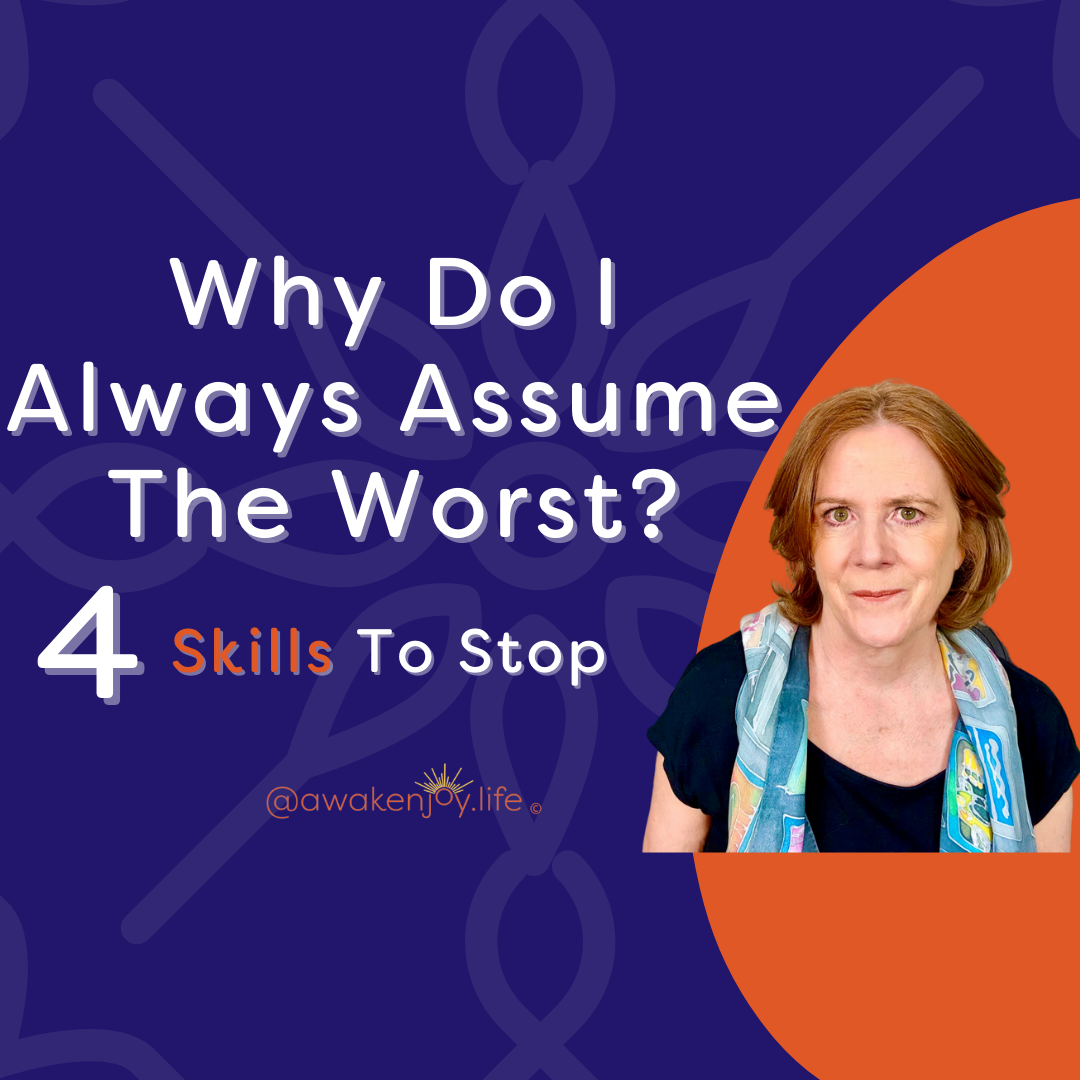
The Catastrophizing Mind Something unexpected happens—or something expected doesn't happen—and suddenly you've constructed an elaborate story that leads to disaster, an unbelievably horrible future. Your whole body is feeling it, and you're completely lost in this narrative. This thought pattern creates genuine pain that is largely avoidable—yet it's extraordinarily common, a widespread human condition that persists until we learn how to interrupt it. In this article, I'll discuss why our brains engage in catastrophic thinking, why we get hooked by these thoughts, and how to tame this worst-case scenario thinking. Why Our Brains Catastrophize The fact that you jump to worst-case scenarios isn't because you're defective. Humans have numerous cognitive biases—ways our thinking naturally skews—that contribute to catastrophic thinking. Catastrophic thinking is one of the top ten cognitive distortions humans experience. There are six key reasons your brain gravitates toward catastrophic thinking: 1. **Survival Prioritization**: The human brain evolved to prioritize survival. Our brain focuses on ensuring our survival and therefore constantly scans for potential dangers. 2. **Future Projection**: The human brain is remarkably skilled at projecting into the future. If we didn't possess this ability to think ahead and were solely focused on survival, we would simply address immediate problems. However, we combine this future-thinking capacity with all its inherent uncertainty with our survival bias, causing us to anticipate distant threats that we can't address today and may never materialize. 3. **Negativity Bias**: We pay substantially more attention to negative aspects of our lives than positive ones. This negativity bias likely evolved from our survival focus. Instead of appreciating positive events and envisioning positive outcomes, we tend to ignore positivity, focus on problems, and create troubling narratives. 4. **Story Affinity**: Our brains love stories. The human mind is naturally drawn into narratives. Consider the movies you watch—if everything went smoothly for the characters with no conflict, how long would you remain engaged? Not very long. Our brains are captivated by stories containing conflict, resolution, and further complications. The most compelling books and narratives present one problem after another, and our brains find this engaging. There's an element of self-entertainment in catastrophizing. This might sound difficult to believe—and you're welcome to disagree in the comments—but in a way, we entertain ourselves with these terrible stories. It's somewhat similar to watching a frightening movie that leaves you tense throughout, only to exit the theater questioning why you chose to see it. Some people enjoy such experiences; others are sensitive to them. With catastrophizing, we create this experience internally without even visiting a theater. 5. **Neural Highways**: The brain creates "superhighways" of thought. Neurons (brain cells) that communicate with each other begin to do so with increasing speed and efficiency. The pathways between them become myelinated—a sheath forms around them—allowing information to flow rapidly between different brain regions when we repeat patterns. If our response to surprising events is catastrophizing, this becomes a superhighway. The good news is that these patterns can be rewired, which we'll address shortly. 6. **Negative Core Beliefs**: We develop negative core beliefs at a young age based on stressful situations we encounter. For some, this might involve extreme trauma; for others, it could be "little-t trauma"—neglect or persistent low-level stressors. These experiences can generate beliefs such as: "I'm powerless," "I'm unsafe," "I'm in danger," "Other people are dangerous," "Nothing works out for me," "I'm always unlucky," "People don't like me," "My needs don't matter," "I'm not worthy," or "I'm not lovable." These beliefs arise from traumas—whether major or minor—in childhood and become deeply embedded in the brain. These negative core beliefs often form the theme of what you catastrophize about, and they become myelinated along with other stress responses. This might sound hopeless, but it isn't. Before discussing solutions, let's explore why we get hooked by catastrophic thinking. Why Catastrophic Thinking Hooks Us Catastrophic thinking hooks us because our bodies physically respond to the stories in our minds. Briefly consider the movie scenario again: If you watch an action film with car chases and tense moments, your pulse likely increases and you might feel anxious. If the movie is sad, you might cry. We have physical reactions to imaginary stories, and our catastrophic thinking triggers stress chemicals in our bodies. As we imagine these scenarios, we're partially living through them. The physical responses we experience are remarkably similar to what we would feel if the situations were actually occurring. These physiological anxiety sensations then tell your brain, "Yes, you should worry about this. Yes, you need to fight, flee, freeze, panic, or run away." Your physical body contributes to the thought pattern, intensifying it. The behaviors you engage in—whether avoidant or compulsive (the two common behavioral responses to anxiety)—further contribute to this cycle, making it worse. When people claim it's "all about your thoughts," that's not entirely accurate. Further, sometimes we can't control our thoughts. We can't always control our thoughts, but if we understand this cycle, we can calm some of those physiological sensations and change certain behaviors, which in turn will reduce catastrophic thinking. Four Skills to Tame Worst-Case Thinking Here are four skills to develop that will help you calm this habit of worst-case thinking. I'm deliberately calling them "skills" and referring to catastrophizing as a "habit" because overcoming bad habits and creating new ones requires practice. All of these techniques will require practice. They may be challenging at first and sometimes tedious, but with practice, they'll become more accessible, particularly during "amygdala hijack" moments when your emotional brain takes over. **1. Build Awareness** Developing awareness of when you're catastrophizing is crucial. If we're unaware of what we're doing, how can we change or stop it? This might require practice. You might become completely absorbed in a disaster scenario before eventually recognizing, "Oh, I'm just imagining this. It's not actually happening." Even if you can't reach that level of awareness, you might notice, "I'm completely stressed about this, and my partner or friend is telling me to calm down, but I don't want to calm down." That's the moment to pause and ask, "Am I catastrophizing? Does this story deserve this much power right now?" Whether you can stop it or not at this point, questioning its value is important—until you're convinced it's not worth doing, you're unlikely to stop it. Build awareness of when you're catastrophizing, and with practice, you'll recognize it earlier. Then you can label your thought even if you can't stop it. Often we can't control our thoughts, but we can label them: "This is a cognitive distortion," "This is a distorted thought," "This is catastrophizing." Labeling helps us gradually separate from our thoughts. Even if you're convinced you must think through this catastrophic situation, ask yourself if you need the physical stress response you're generating. Is there a way to consider these possibilities without all the physical anxiety? **2. Investigate Your Patterns** This skill involves cognitive investigation—exploring why you get upset about specific things. We've discussed why the human brain generally catastrophizes, but why do you personally do it? What are your triggers, and what are your negative core beliefs? Sometimes people struggle to identify their negative core beliefs. I offer a free PDF ( click here to access ) that guides you through identifying your negative core belief and provides three tools to begin overturning it. How does your catastrophizing relate to your personal story? Some people are triggered by social situations, others by work, natural disasters, or major world events. Some people are triggered by everything (more characteristic of generalized anxiety disorder). Your worst-case thinking might be very specific—perhaps about public speaking (a common phobia) or health anxiety. Whatever form it takes, investigate your triggers and their origins. **3. Challenge Your Stories** When you have a catastrophic story, try writing down the major events. Here are several methods for challenging the story (the last being my favorite): As you note the components of your catastrophic story, ask yourself aloud or in writing: - Is this actually happening? - What's the likelihood this will happen? - Is there anything I can do about this right now? If you're dealing with a real problem, there's probably something you can do about your current situation, but it's highly unlikely you can address all the problems in your catastrophic story. Focus on what you can do now. Then ask yourself: - What other endings could this story have? I often recommend developing a different story with a positive ending, and another with a neutral ending. Realistically, most situations in life end with a mix of good and bad elements. Journal or use your phone's audio recorder to create a structure for questioning these stories, considering different outcomes, and bringing your focus back to the present moment and what you can do now. **4. Change Your Behaviors** The fourth skill involves changing the behaviors that accompany your catastrophic thinking and contribute to the neural pathways in your brain. We want to rewire these patterns, and behavior change is one of the most effective approaches to do so. Consider the cycle that catastrophic thinking leads to physical sensations which impacts your behavior. catastrophic thinking → physical sensations → behaviors The first skill listed above, Awareness, addresses the entire cycle. The second and third skills focus on the thinking aspects of the cycle. In order to address the behavioral aspect , we need to develop new behavioral responses to our anxious thinking. Most commonly, the behaviors that arise from anxious thinking are either compulsive or avoidant. So sometimes a new behavior means not engaging in a compulsive behavior. For example, if you have health anxiety and habitually search the internet for symptoms, finding yourself in a rabbit hole of possible diseases, that's a behavior. Stopping this behavior is essential for recovery because these compulsive actions contribute to the cycle by providing momentary relief. That brief relief reinforces the cycle and keeps you stuck. The same applies to avoidance. If you're panicking about giving a presentation at school and call in sick, that avoidance might initially give you relief, reinforcing to your brain that avoidance is appropriate. It reinforces that the situation is genuinely threatening and should be avoided. The temporary relief perpetuates the cycle. Instead of avoiding, the behavior to develop is to do the thing you're avoiding. If you're engaging in compulsive behaviors, the skill to develop is not doing those things. As you consider this CBT cycle of how thoughts affect behaviors and feelings, and how behaviors affect feelings and thoughts, you can introduce a behavior like diaphragmatic breathing, which immediately impacts your physiology. Our physical state can change remarkably quickly when we alter our breathing and actions. Learning diaphragmatic breathing is an excellent tool for interrupting this cycle. People often try to practice diaphragmatic breathing during an amygdala hijack, when it's generally less effective. I recommend truly learning proper diaphragmatic breathing technique—a very even inhale and exhale, not a deep breath followed by a quick release. It's a slow, even breathing pattern that expands your lungs, pushes down your diaphragm, and extends your stomach outward. I have a detailed video on this technique that I'll link here . I recommend that you practice five minutes at a time, three times daily, every day. Try it for two weeks and observe any changes, then continue for another two weeks. This is about habit formation—we want diaphragmatic breathing to become our automatic breathing pattern. Diaphragmatic breathing aims for a state of alert relaxation rather than alert stress or complete relaxation to the point of sleep. This middle ground is achievable, but it requires consistent practice. Summary: Key Points If you frequently catastrophize, there's nothing wrong with you—it's a common human pattern supported by our brain's natural tendencies. We get hooked because of anxiety chemicals and our love of stories. The four skills to develop are: 1. Building awareness of when you're catastrophizing 2. Investigating your personal triggers and negative core beliefs 3. Challenging catastrophic stories and creating alternative endings 4. Changing behaviors that reinforce the cycle If you found value in this article, please share with someone else who might benefit! How does catastrophic thinking affect your life, and which of these skills do you think might help you the most? I'd love to hear your thoughts in the comments below.

Understanding this mismatch can help you lower your anxiety! There is an evolutionary mismatch between our world now, a delayed return environment, and the world in which our brain evolved, an immediate return environment. Our brain is a wonderful predictive machine, unless it gets trapped trying to control things it can not control, which is easy in a delayed return environment.
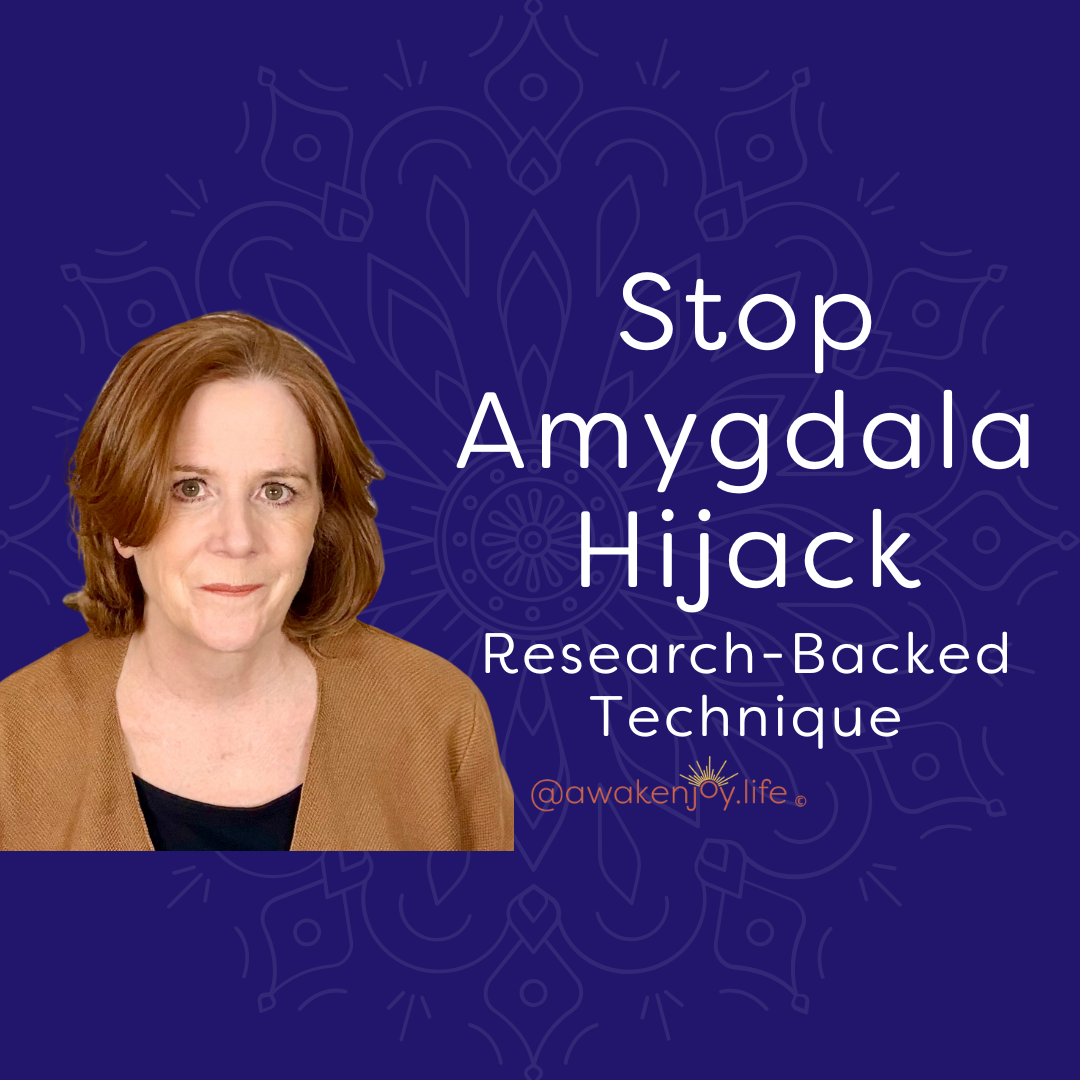
Scientifically proven, simple technique to calm an amygdala hijack. This blog describes this simple technique, provides the scientifically proven benefits of using this technique and shares 7 steps to implement this technique in the most effective way! Based on Lieberman's scientific research on affect labeling.
The Technique: Affect Labeling
Affect labeling is putting into words what emotion you are feeling.
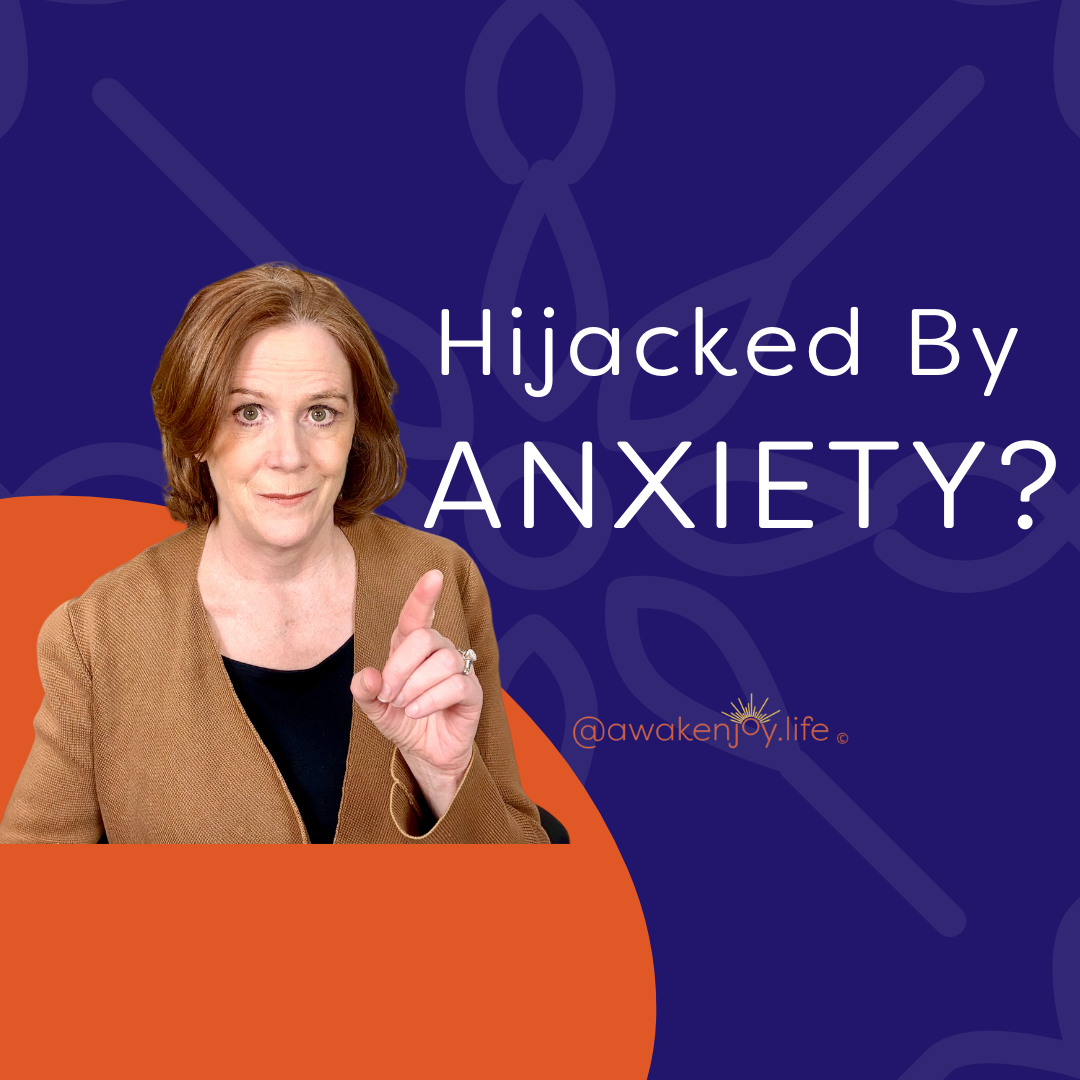
All anxiety disorders are driven by an amygdala hijack. This blog explains how this work, why it is a problem and what to do about it. If your anxiety is controlling your life, ruining your happiness, and maybe even impacting your health, know that it is not all in your head. Your nervous system has been hijacked, and understanding this can really help you on your path to recovery.

